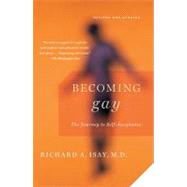
Note: Supplemental materials are not guaranteed with Rental or Used book purchases.
Purchase Benefits
What is included with this book?
| Acknowledgments | p. xi |
| Preface | p. xiii |
| Introduction: Being Homosexual and Becoming Gay | p. 3 |
| Becoming Gay: A Personal Odyssey | p. 10 |
| The Gay Therapist | p. 36 |
| The Homosexual Adolescent | p. 62 |
| The Dilemma of Heterosexually Married Homosexual Men | p. 84 |
| Developing a Positive Gay Identity with HIV or AIDS | p. 114 |
| Becoming Gay as an Older Homosexual Man | p. 132 |
| Opposing Institutional Bias: Antigay Discrimination in Psychoanalysis | p. 147 |
| Notes | p. 169 |
| Index | p. 187 |
| Table of Contents provided by Ingram. All Rights Reserved. |
The New copy of this book will include any supplemental materials advertised. Please check the title of the book to determine if it should include any access cards, study guides, lab manuals, CDs, etc.
The Used, Rental and eBook copies of this book are not guaranteed to include any supplemental materials. Typically, only the book itself is included. This is true even if the title states it includes any access cards, study guides, lab manuals, CDs, etc.
Excerpted from Becoming Gay: The Journey to Self-Acceptance by Richard Isay
All rights reserved by the original copyright owners. Excerpts are provided for display purposes only and may not be reproduced, reprinted or distributed without the written permission of the publisher.